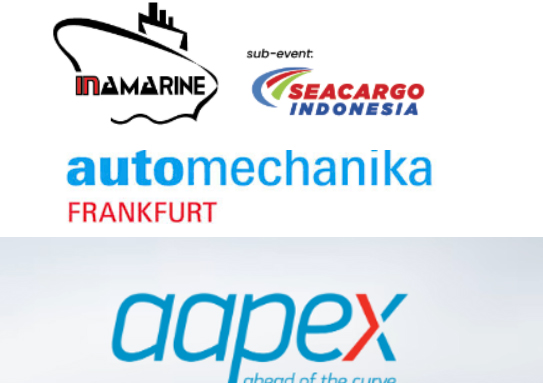Oil Seal and Shock Absorber Performance in Automotive Applications and Maintenance Techniques
Understanding Oil Seal Shock Absorbers Essential Components for Smooth Operation
In the world of machinery and automotive design, the significance of shock absorbers and their components cannot be overstated. Among these components, oil seals play a crucial role in maintaining the efficiency and longevity of shock absorbers. This article delves into the functionality, importance, and maintenance of oil seal shock absorbers, ensuring a comprehensive understanding for those involved in mechanical engineering, automotive design, or simply interested in how our vehicles work.
What is an Oil Seal?
An oil seal, often referred to as a shaft seal or lip seal, is a critical component that prevents the leakage of lubricants while simultaneously protecting the internal machinations of machinery from external contaminants. In the context of shock absorbers, oil seals have a dual purpose they keep hydraulic fluid contained within the shock absorber and protect the internal components from dirt, dust, and moisture. This ensures optimal performance and prevents premature wear and tear.
The Role of Oil Seals in Shock Absorbers
Shock absorbers are designed to absorb and dissipate energy generated from road conditions, providing a smoother ride. Oil seals in shock absorbers are essential in this mechanism for several reasons
1. Fluid Retention Shock absorbers utilize hydraulic fluid to control the movement of the piston within the cylinder. Oil seals prevent this fluid from leaking out, ensuring that the shock absorber maintains its damping capabilities. A leak can lead to reduced performance, impacting ride quality and vehicle safety.
2. Protection from Contaminants The environment where vehicles operate is rife with potential contaminants such as dust, dirt, and water. Oil seals act as barriers, preventing these materials from entering the shock absorber. Contaminants can cause significant damage to internal components, leading to corrosion, pitting, and eventual failure.
3. Improved Longevity By retaining oil and keeping out contaminants, oil seals contribute to the overall durability of shock absorbers. This means less frequent replacements and repairs, saving both time and money for vehicle owners.
Types of Oil Seals
There are various types of oil seals utilized in shock absorbers, each designed for specific applications
. The most common types includeoil seal shock absorber

- Lip Seals Characterized by their flexible lip, these seals provide an effective barrier against leakage. They are widely used in shock absorbers due to their ability to function effectively under varying pressures.
- V-Ring Seals These seals offer excellent protection against dirt and moisture, thanks to their unique design that creates a tight fit around the shaft.
- Rotary Seals Typically used in automotive applications, rotary seals are designed to handle high-speed rotations, making them ideal for shock absorbers that undergo constant movement.
Maintenance and Care
To ensure the longevity and efficiency of oil seal shock absorbers, routine maintenance is essential. Here are some key practices
1. Regular Inspections Periodically check for signs of fluid leakage around the seals. Early detection of leaks can prevent further damage.
2. Environment Considerations If operating in particularly harsh environments (such as off-road conditions), consider more frequent inspections and potentially upgrading to more robust seals designed for such applications.
3. Proper Lubrication Ensuring that the shock absorber is adequately lubricated will reduce the wear on both the seal and the internal components.
4. Replacement Over time, oil seals wear out and may require replacement. Adhering to the manufacturer's guidelines for replacement intervals can help maintain optimal performance.
Conclusion
Oil seal shock absorbers are integral to the performance and longevity of many vehicles and machinery. Understanding their role, types, and maintenance practices can aid in ensuring smooth operations and enhancing safety. As technology advances, the design and materials used for oil seals continue to evolve, promising even greater efficiency and reliability in shock absorber systems. Whether for personal vehicles or heavy-duty machinery, the health of oil seal shock absorbers is critical for ensuring a safe and comfortable ride.
-
Simplifying Oil Changes: A Comprehensive Guide to Oil Drain Plugs and Their Variants
News Aug.04,2025
-
Mastering Oil Drain Maintenance: Solutions for Stripped, Worn, and Upgraded Oil Plugs
News Aug.04,2025
-
Fixing Oil Pan Plug Issues: Leaks, Stripped Nuts, and the Right Replacement Solutions
News Aug.04,2025
-
Everything You Need to Know About Oil Drain Plugs: Sizes, Fixes, and Upgrades
News Aug.04,2025
-
Choosing the Right Oil Drain Plug: A Guide to Sizes, Materials, and Drain Innovations
News Aug.04,2025
-
A Complete Guide to Automotive Drain Plugs: Types, Problems, and Innovative Solutions
News Aug.04,2025
-
The Ultimate Guide to Car Repair Kits: Tools and Essentials Every Driver Should Own
News Aug.01,2025
Products categories















